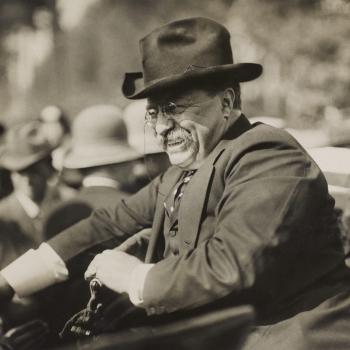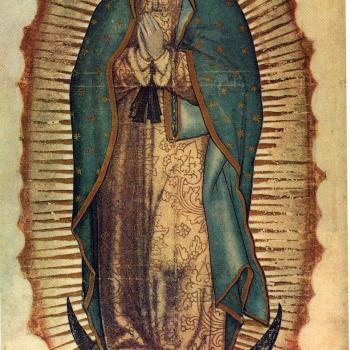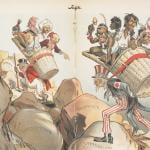They may be your and my neighbors.
One of the themes that emerged in the “conversation we had to have” about Confederate Monuments three years ago was that they were products of a particular period in the Jim-Crow, Lost-Cause South. Here’s how the American Historical Association put it:
The bulk of the monument building took place not in the immediate aftermath of the Civil War but from the close of the 19th century into the second decade of the 20th. Commemorating not just the Confederacy but also the “Redemption” of the South after Reconstruction, this enterprise was part and parcel of the initiation of legally mandated segregation and widespread disenfranchisement across the South. Memorials to the Confederacy were intended, in part, to obscure the terrorism required to overthrow Reconstruction, and to intimidate African Americans politically and isolate them from the mainstream of public life. A reprise of commemoration during the mid-20th century coincided with the Civil Rights Movement and included a wave of renaming and the popularization of the Confederate flag as a political symbol. Events in Charlottesville and elsewhere indicate that these symbols of white supremacy are still being invoked for similar purposes….
Nearly all monuments to the Confederacy and its leaders were erected without anything resembling a democratic process. Regardless of their representation in the actual population in any given constituency, African Americans had no voice and no opportunity to raise questions about the purposes or likely impact of the honor accorded to the builders of the Confederate States of America. The American Historical Association recommends that it’s time to reconsider these decisions.
With the blessing of the most prestigious body of historical scientists, it became easy for historians to get in line:
Lee monuments were erected by Lost Causers who wanted to celebrate a society built on slavery and white supremacy. Most of them were built during the Jim Crow era for this very purpose. Think about it. Would Lee merit a monument if not for his role as commander of the Army of Virginia? Maybe, but I doubt you would find one outside of Virginia. I don’t know off-hand the history of George Washington monuments, but I wonder how many of them were erected for the purpose of celebrating his slave ownership.
Funny thing is, the warning that destruction of Confederate Monuments could lead to similar attacks on statues memorializing other figures from America’s past turned out to be prescient. One reason is that people in most societies continue to venerate figures not from the past but in the present after a life of accomplishment.
Take the example of Mayor Frank Rizzo in Philadelphia, recently removed (three years after 2017 whe Mayor James Kenney promised he would — but the price tag of $200,000 was too much — imagine how many COVID-19 tests could be given with all that dough). Rizzo’s statue did not go up in the distant past but only in 1999, almost 20 years after he last served as mayor, and over thirty after he had served as police commissioner. The Philadelphia politician who made the statue happen was Ed Rendell, mayor of Philadelphia in 1999, later governor of Pennsylvania, and then chair of the Democratic National Committee. Rendell is still alive and calls into one of my favorite sports-talk radio shows. I’m not sure how you cancel a public figure now out of office and almost 80 years old, but the Rizzo statue was not the product of Italian-American political bosses from the fascistic 1930s who wanted to assert their dominance in the city. Rizzo was a controversial figure when he died and when the statue went up. And yet, Philadelphians have coped psychologically both with memories of Rizzo and the statue that memorialized him.
What the heck happened?
Another case, a little more distant from Rizzo, but that shows how even the people behind statues don’t always know what they are doing is that of Richard Stockton. Here‘s a quick description of the colonial figure:
He was one of the founders of the College of New Jersey at Princeton, he was married to Annis Boudinot Stockton, one of the great female American poets of the eighteenth-century. He was a member of the Continental Congress and he signed the Declaration of Independence. He almost became the revolutionary-era governor of New Jersey, but he lost that honor to William Livingston in a very close election. In the Revolutionary War, Stockton was captured by the British and imprisoned in New York. He died in 1781 at Morven, his Princeton home.
He also owned slaves.
That became a problem for the university named for him. Founded in 1969 as South Jersey State College, New Jersey and college officials likely wanted a more prestigious name. So why not go with a Founder and attach “university” to his name. That was fine until August 2017 when in the midst of Confederate Monument protests, the university decided to remove Stockton’s bust from the campus.
Stockton Provost and Vice President for Academic Affairs Lori Vermeulen sent a letter to the campus community Thursday to inform them of the decision to remove the statue.
Vermeulen said the mission of Stockton University — “to develop engaged and effective citizens with a commitment to lifelong learning and the capacity to adapt to change in a multicultural, interdependent world” — affords the university the responsibility to provide an opportunity for students to learn about the facts surrounding Richard Stockton’s place in American history as well as in Stockton’s history.
The removal of the bust is temporary, and will return with an exhibit that is being developed that will show a more historical perspective and one that will allow meaningful dialog about Richard Stockton as a controversial figure, Vermeulen explained.
A year later, the university sponsored a series of lectures and conferences to figure out what to do and learn American history and the history of memorializing figures. But in 1969 when people responsible for the university, who are likely still alive decided on a name, they had no problem using that of a slave owner. Today, no one is sure why:
What’s in a Name?
Stockton University was founded in 1969 as Richard Stockton State College. It opened in the Mayflower Hotel in Atlantic City, and was later established in the Pinelands of Galloway with a mission to provide public school students with an interdisciplinary and individualized liberal arts education. Richard Stockton was not the only—or even the most logical—choice for the college’s name. Stockton had never lived or worked in Galloway. He had never owned property here, nor had he been part of any significant event in this part of the colony, later state.The College Board of Trustees could have chosen from five New Jersey signers of the Declaration of Independence, not to mention the names of New Jerseyans involved in ratifying the U.S. Constitution, or a host of other notables from the state’s illustrious past. Geography was also an option. Indeed, of the dozen or so names initially proposed for the institution, all four of the top contenders—Southern Jersey State College, South Jersey State College, Atlantic State College, and Jersey Shore State College—preferred to commemorate place rather than a person.
Why Stockton University?
Good question, and one that we are still exploring. Stockton staff have been identifying and interviewing past administrators, faculty, and board members to learn more about the circumstances surrounding the naming of this institution.
Memorializing figures from the distant and recent past is not simply from a by-gone era when white Southerns ran a part of the country. It’s something that Americans continued to and still do.
Which leads me to think that destroying public property is a little like pulling down the rendering of the Virgin Mary in your neighbor’s garden. Or even like a poster of James Dean on your friend’s bedroom wall. That statue and that image do not belong to you or me. Why do some people think that destroying objects placed in public land is any less property than a yard or a house? A statue may belong to the public. But unless you are the king or queen of the realm, it also belongs to a lot more persons than you or me.
The list of items needing a national conversation continues to grow. In addition to race, trans, climate, and of course public health, we need to add ownership, stewardship, civics, and economics.












